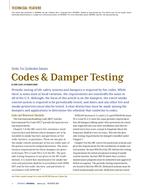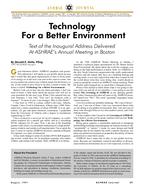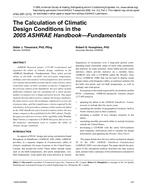This paper describes an experimental performance analysis of a vapor-compression heat pump as it is currently being taught in a senior-level thermal science laboratory course in mechanical engineering. Students collect data from an actual, air-to-air, vapor-compression heat pump for various sink temperatures (air inlet temperature to the condenser) and then perform a first law of thermodynamics (conservation of energy) analysis to determine its overall operating performance in terms of electrical energy consumption and heat supplied. The measured coefficient of performance (COP) is then compared to the maximum possible (Carnot) COP for the experimental source and sink temperatures. Then a second law of thermodynamics analysis is performed on each of the system components to determine their individual contributions to the overall system losses (irreversibilities). This analysis provides insight to the students which components have the most potential for design improvements in terms of the overall system performance. Overall, this laboratory has been useful for giving students a practical understanding of the characteristics of a vapor compression heat pump system while demonstrating the complementary nature of first and second law methods for analyzing the performance of the system.
Units: Dual
Citation: Symposium, ASHRAE Transactions, 1988, vol. 94, pt. 2, Ottawa
Product Details
- Published:
- 1988
- Number of Pages:
- 15
- File Size:
- 1 file , 1.5 MB
- Product Code(s):
- D-OT-88-10-3


